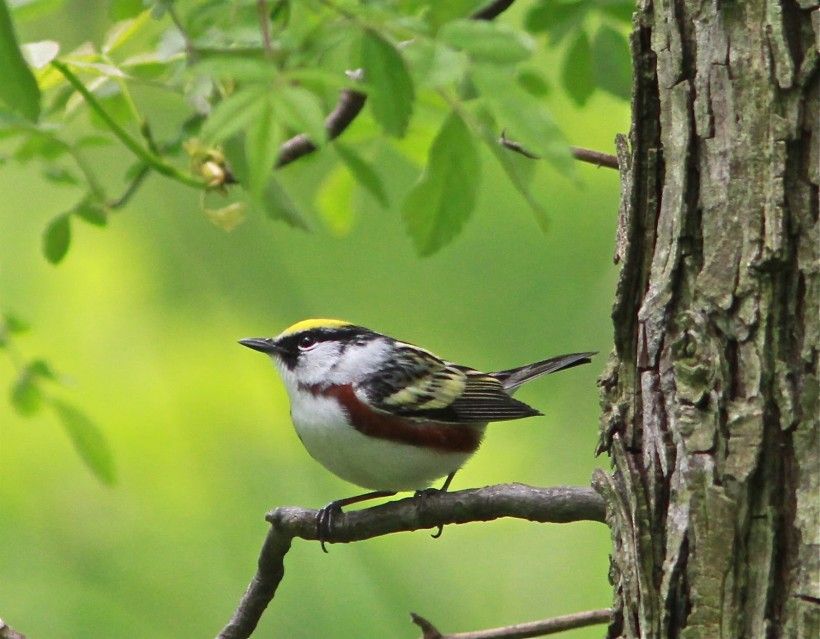Migration in Full Swing
For the last two weeks, the southerly winds have provided an opportunity for many of our migratory bird species to make their way northward.
The highlight for the last week has been the bountiful warblers, vireos, and flycatchers that have begun to make their way northward to their breeding grounds. Our staff led several birding walks to various properties recently and tallied an impressive number of species on each walk. And just yesterday, an olive-sided flycatcher was spotted at Waterloo Mills, the first known sighting of this bird at the Preserve.
With the warm weather arriving a little early this year, most of our deciduous trees leafed-out earlier than normal. Typically, leaf-out corresponds with the annual spring migration of warblers. With many of the tree species fully leafed-out, one would assume viewing these small birds would be more difficult. However, we didn't find that to be true this year. The birds were very vocal and actively fed on all of the leaves and flowers of our native trees, especially oaks. The warm weather may have also produced an earlier than normal insect emergence, which provided ample sustenance for the migrating birds.
The days are filled with bird song. Many of our local breeding species are either setting up territories or are already incubating eggs. Just the other day, we discovered a red-tailed hawk nest in the Laurels Preserve with an adult bird incubating eggs. We encourage you to get outside and see what birds you can see or hear. If you are not familiar with identifying bird songs, try following the sound to its source to watch the bird sing. That's the easiest way to learn the song of a particular species.
